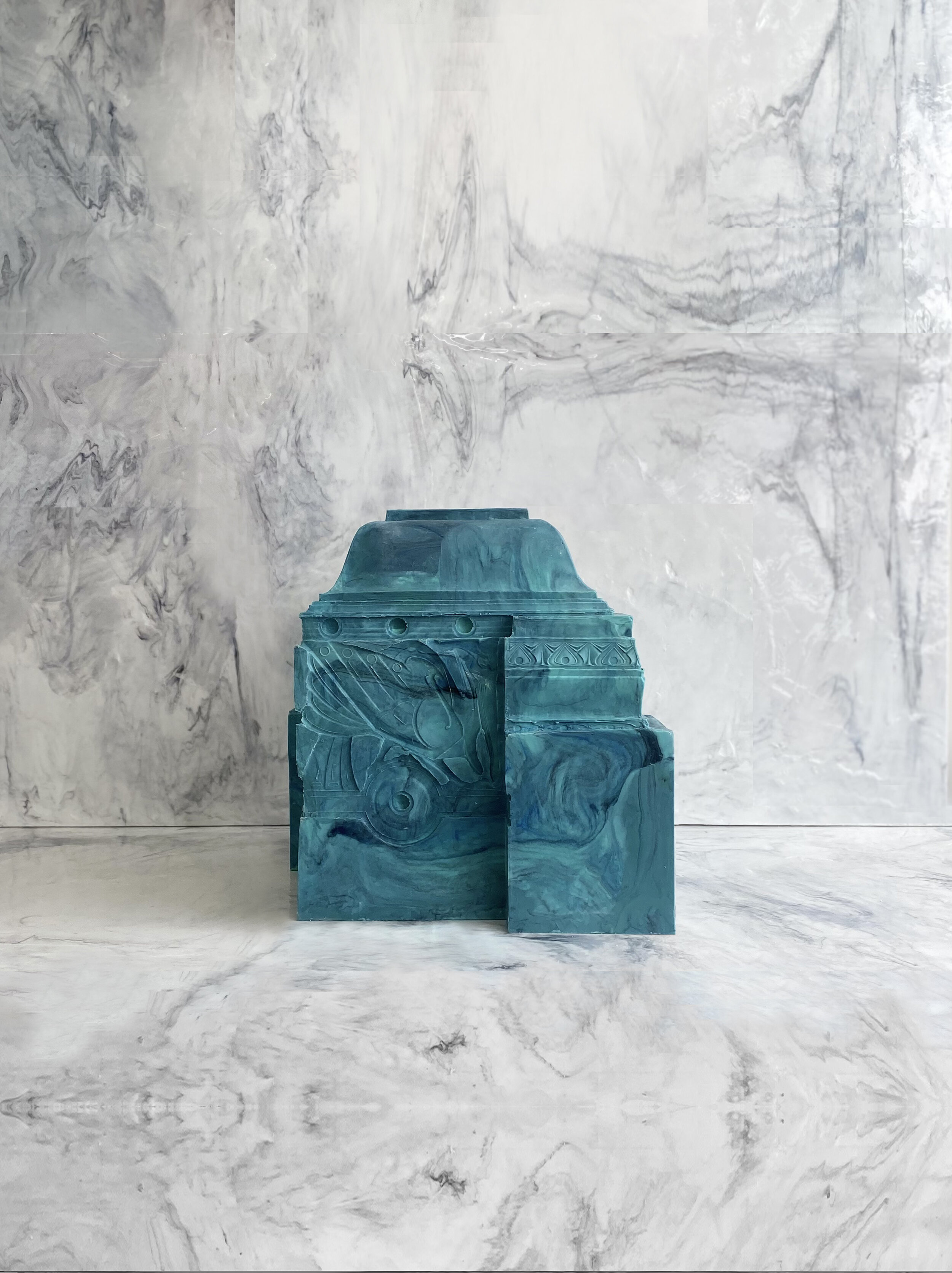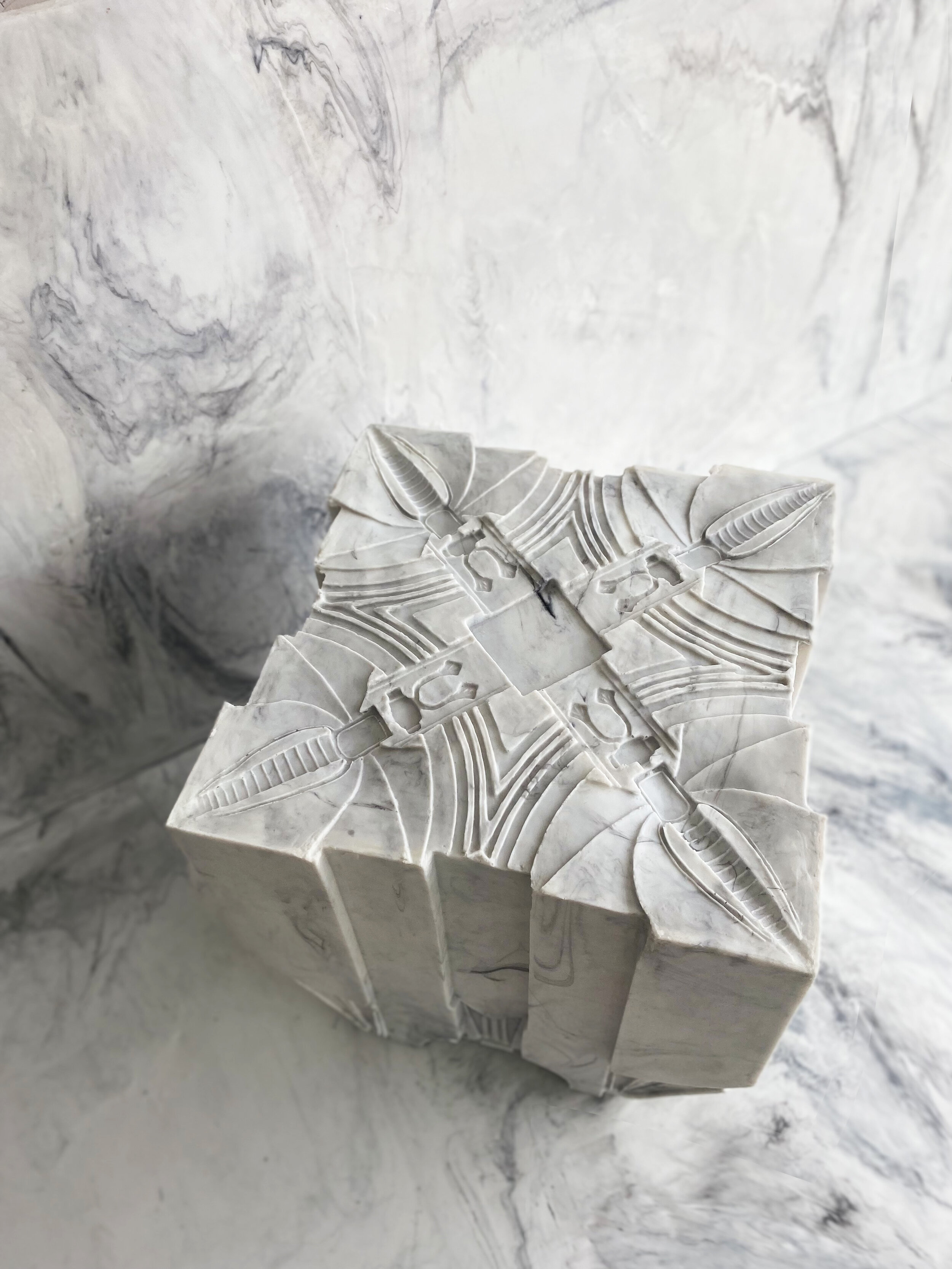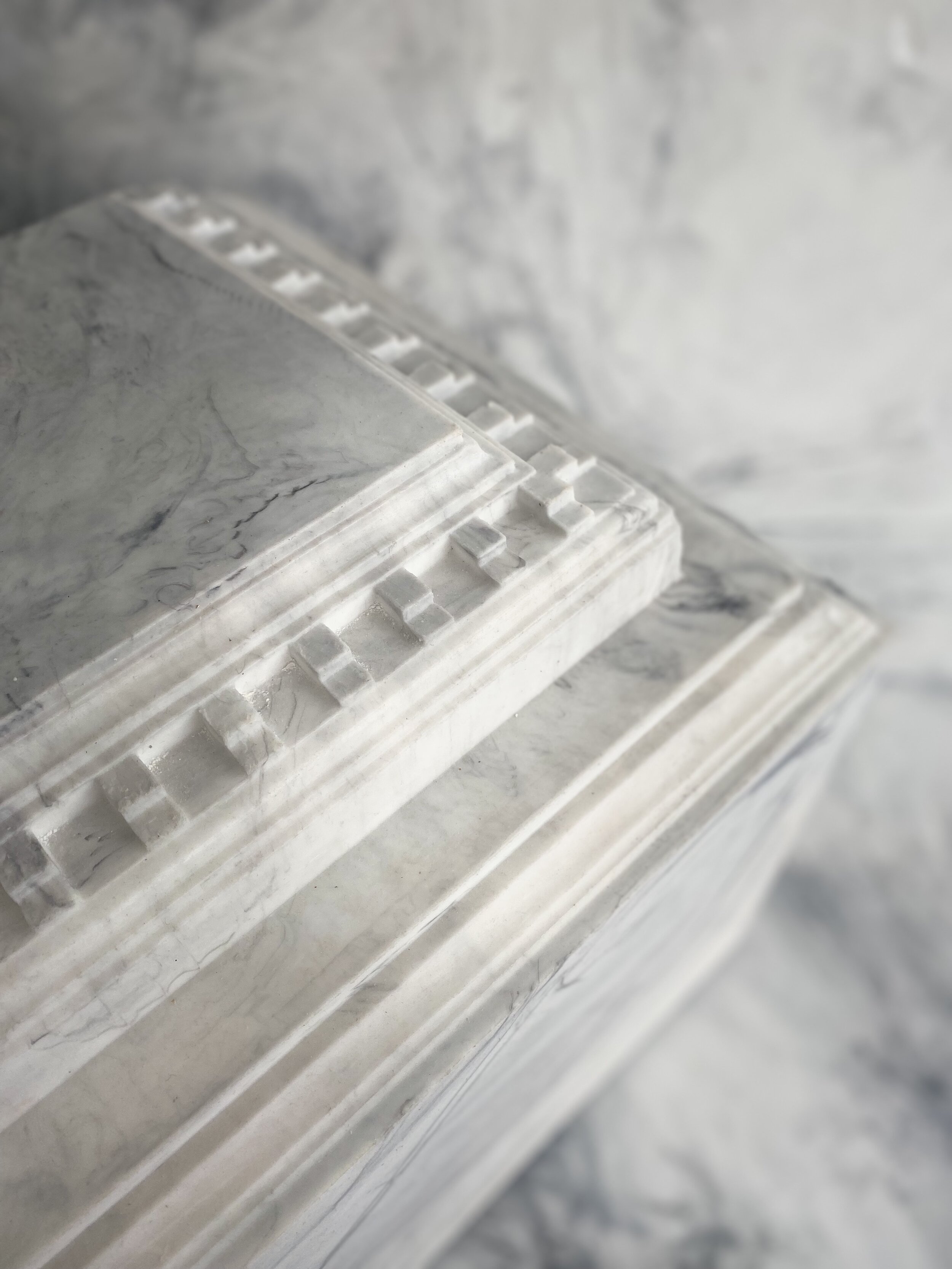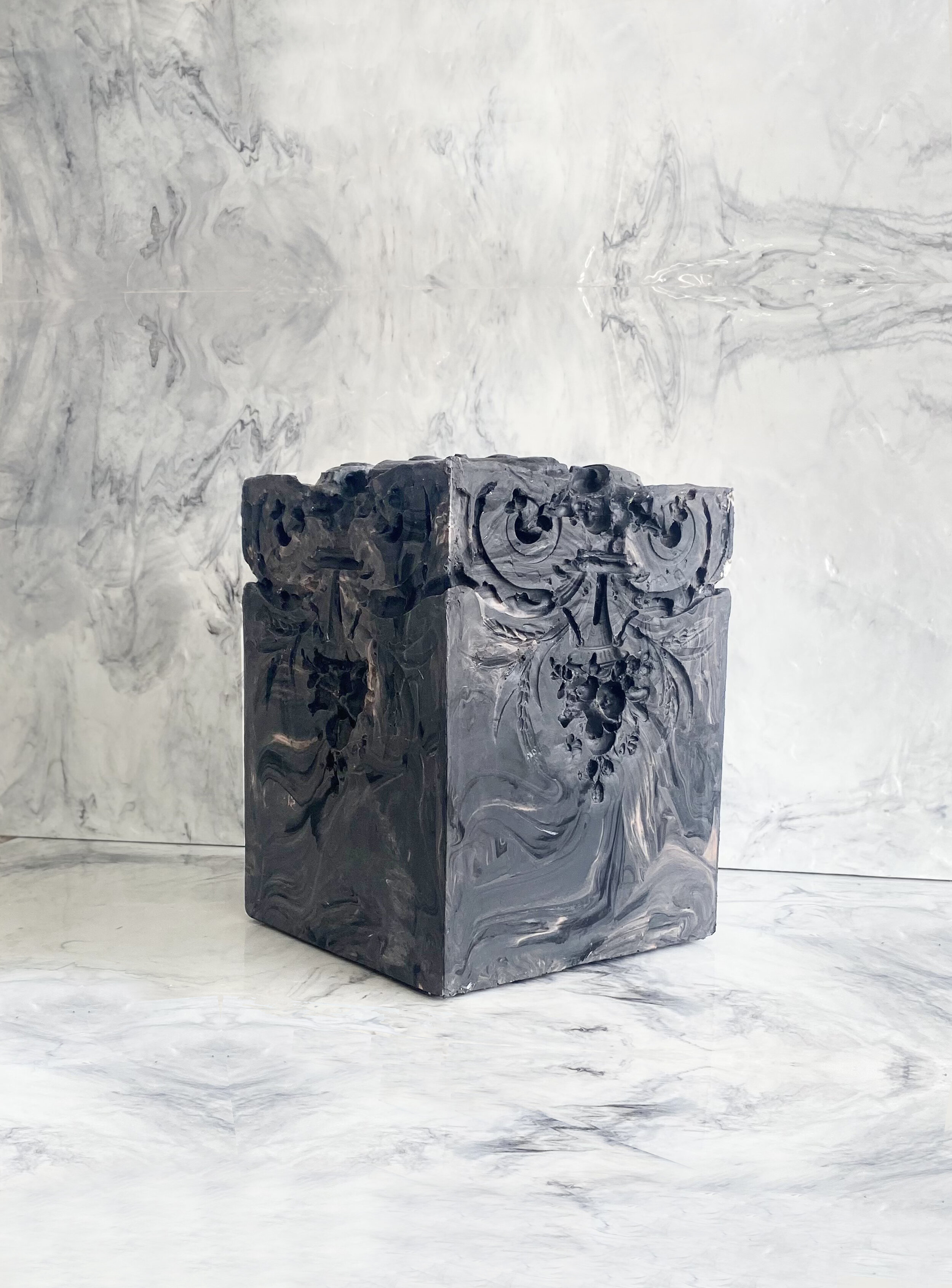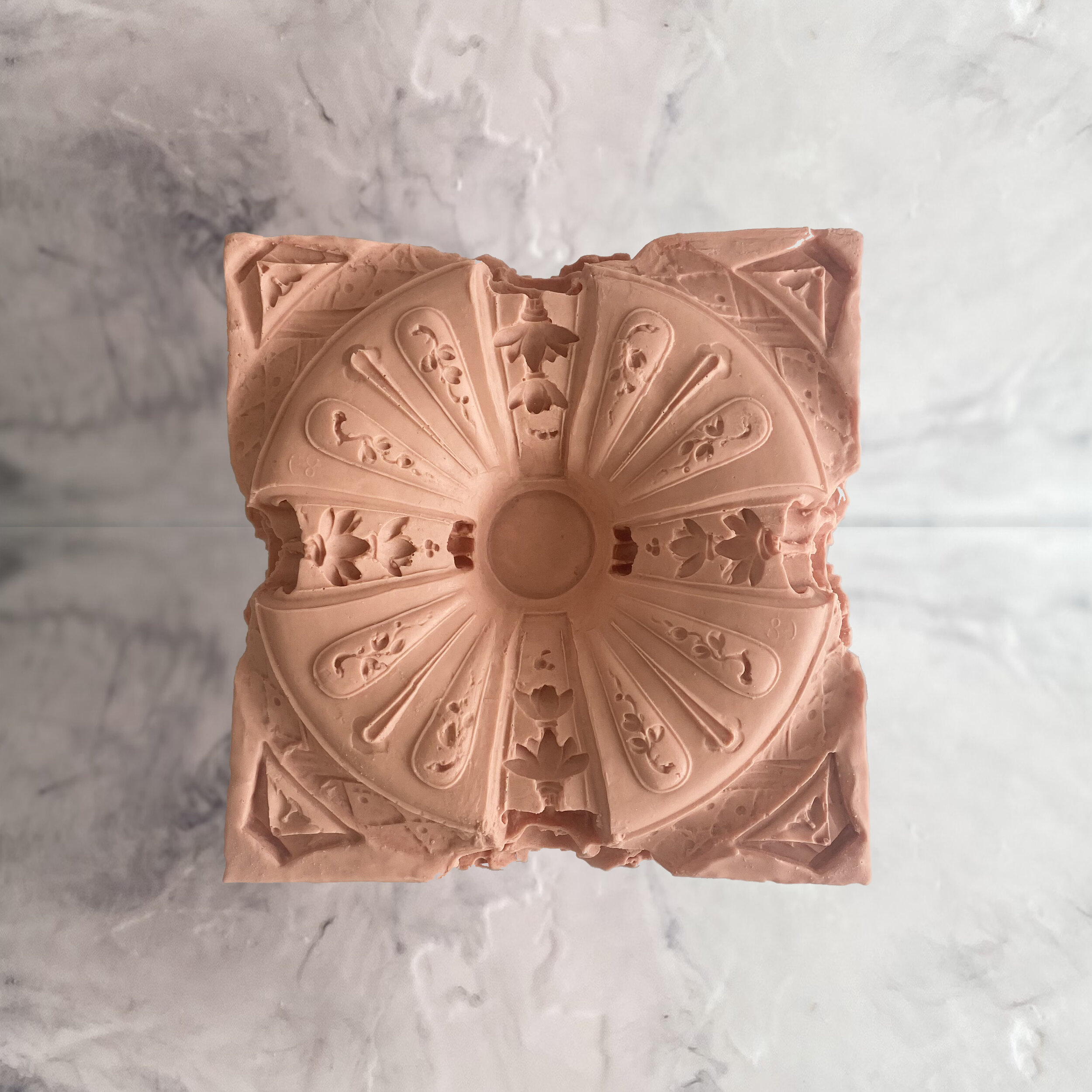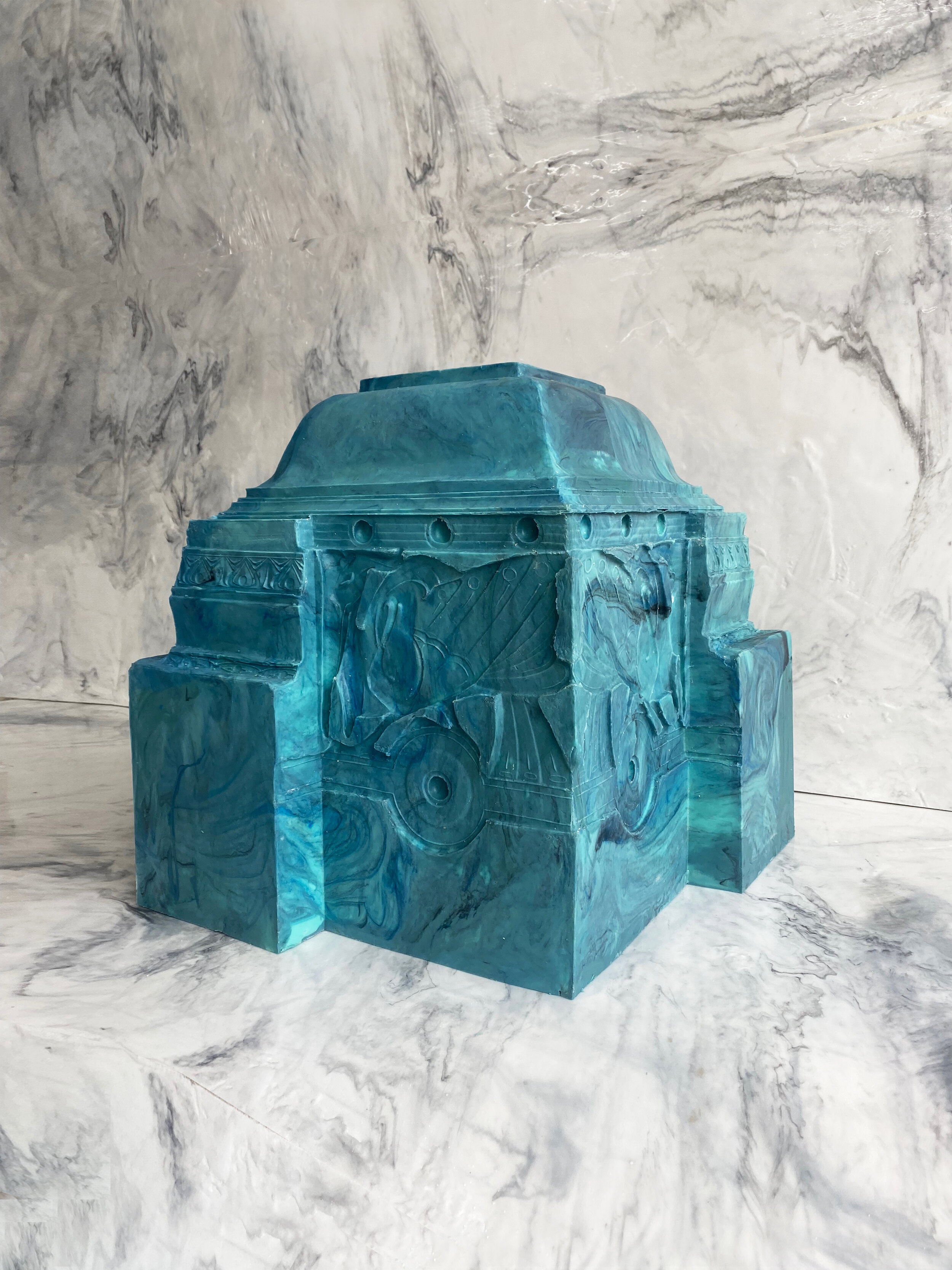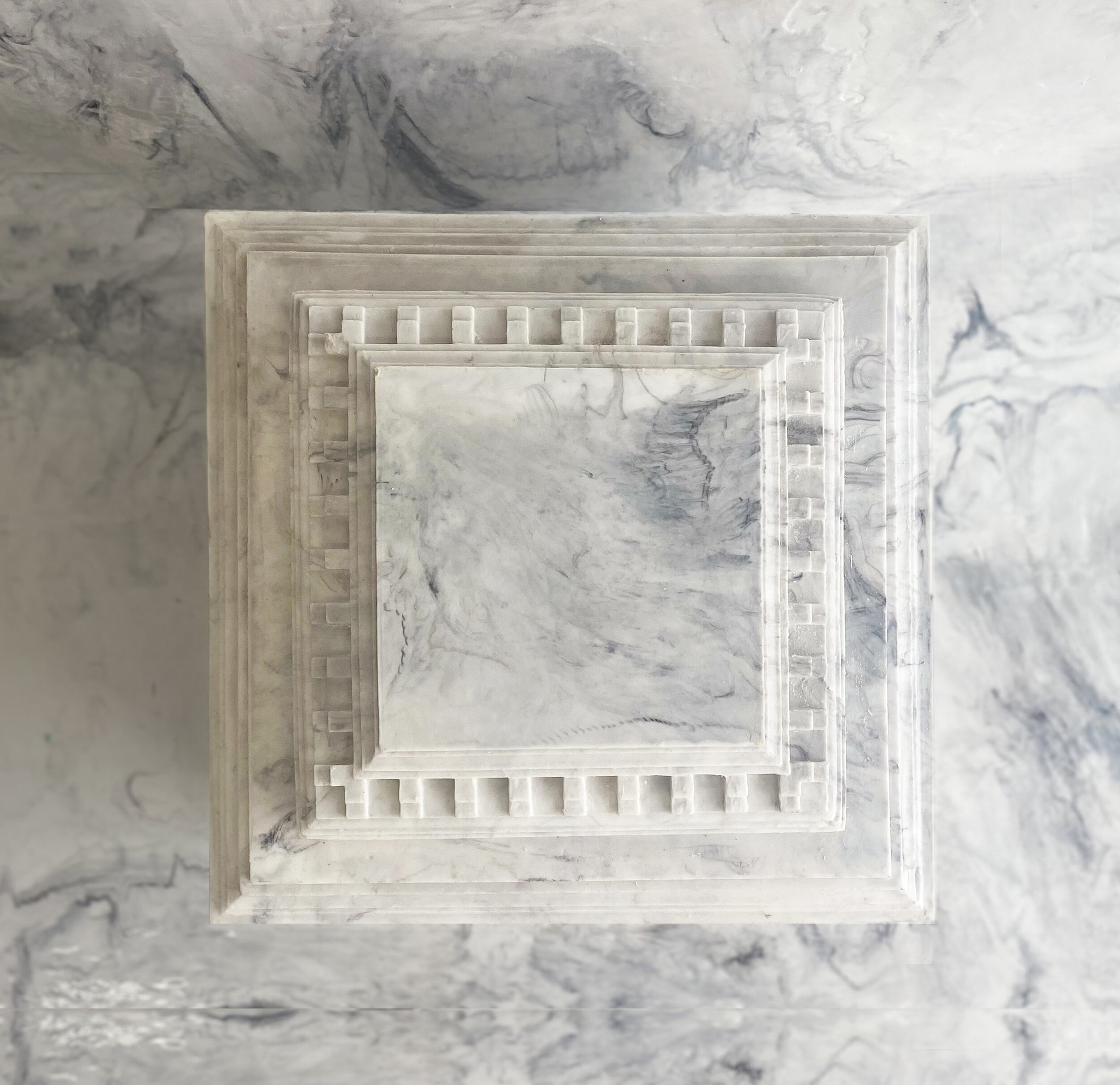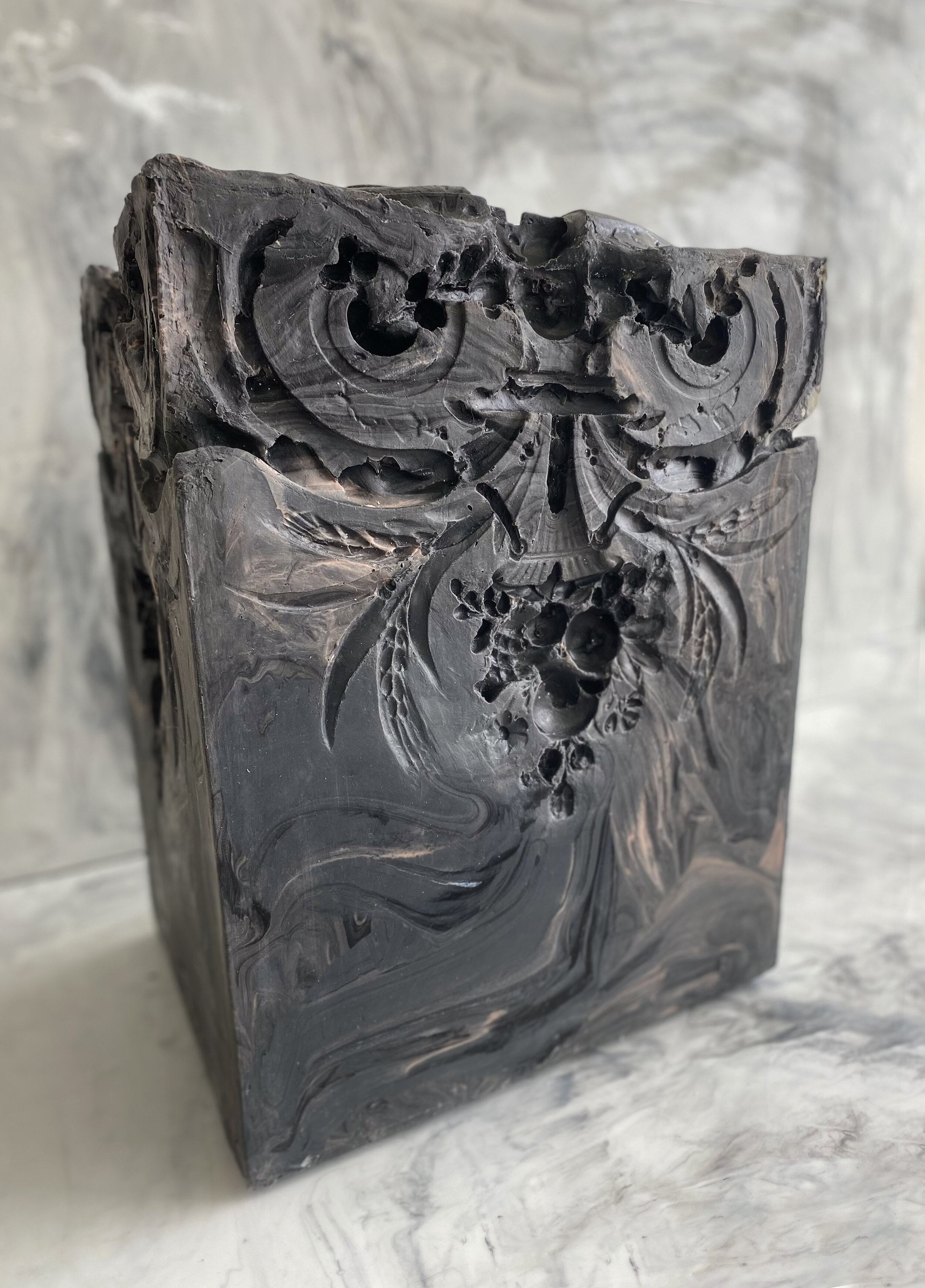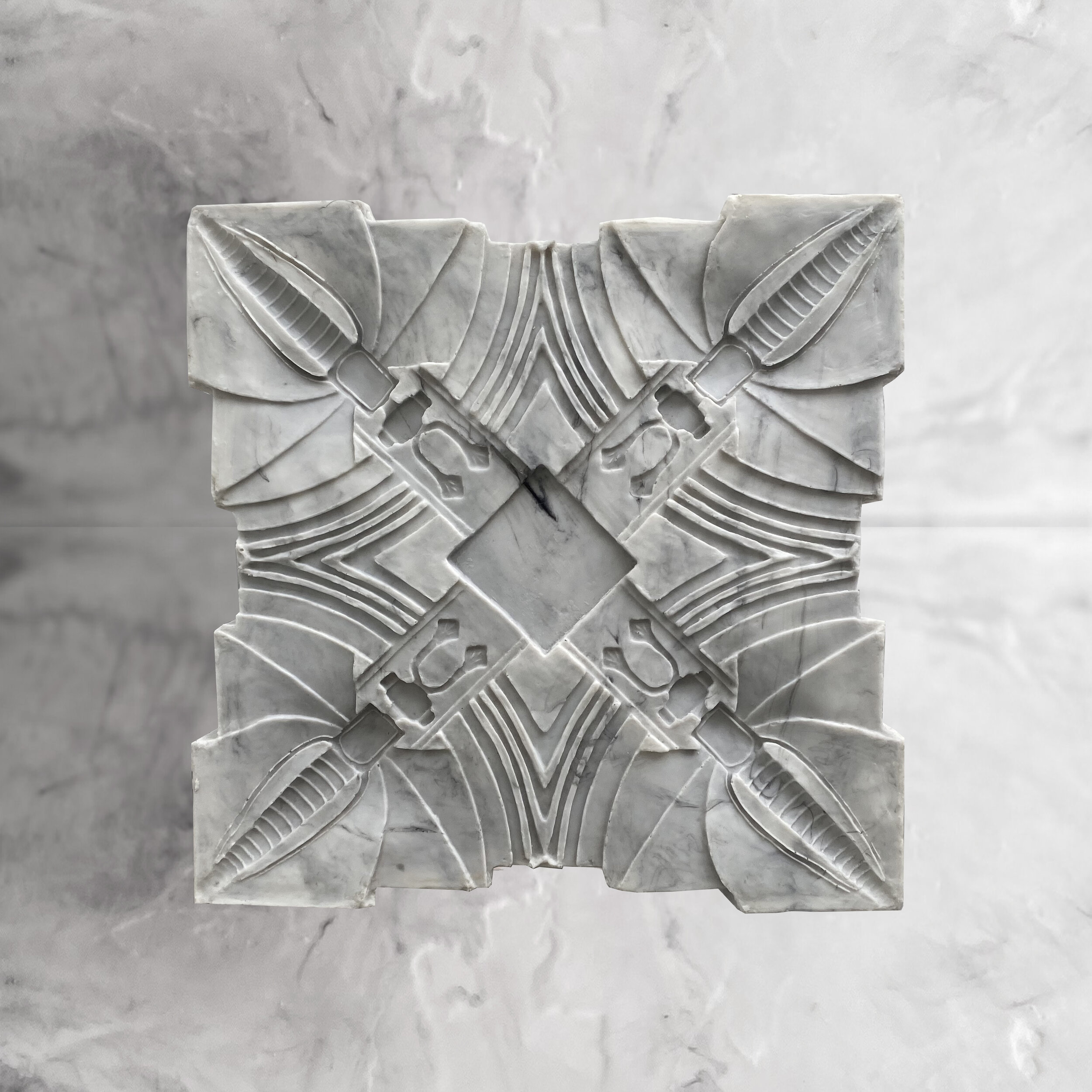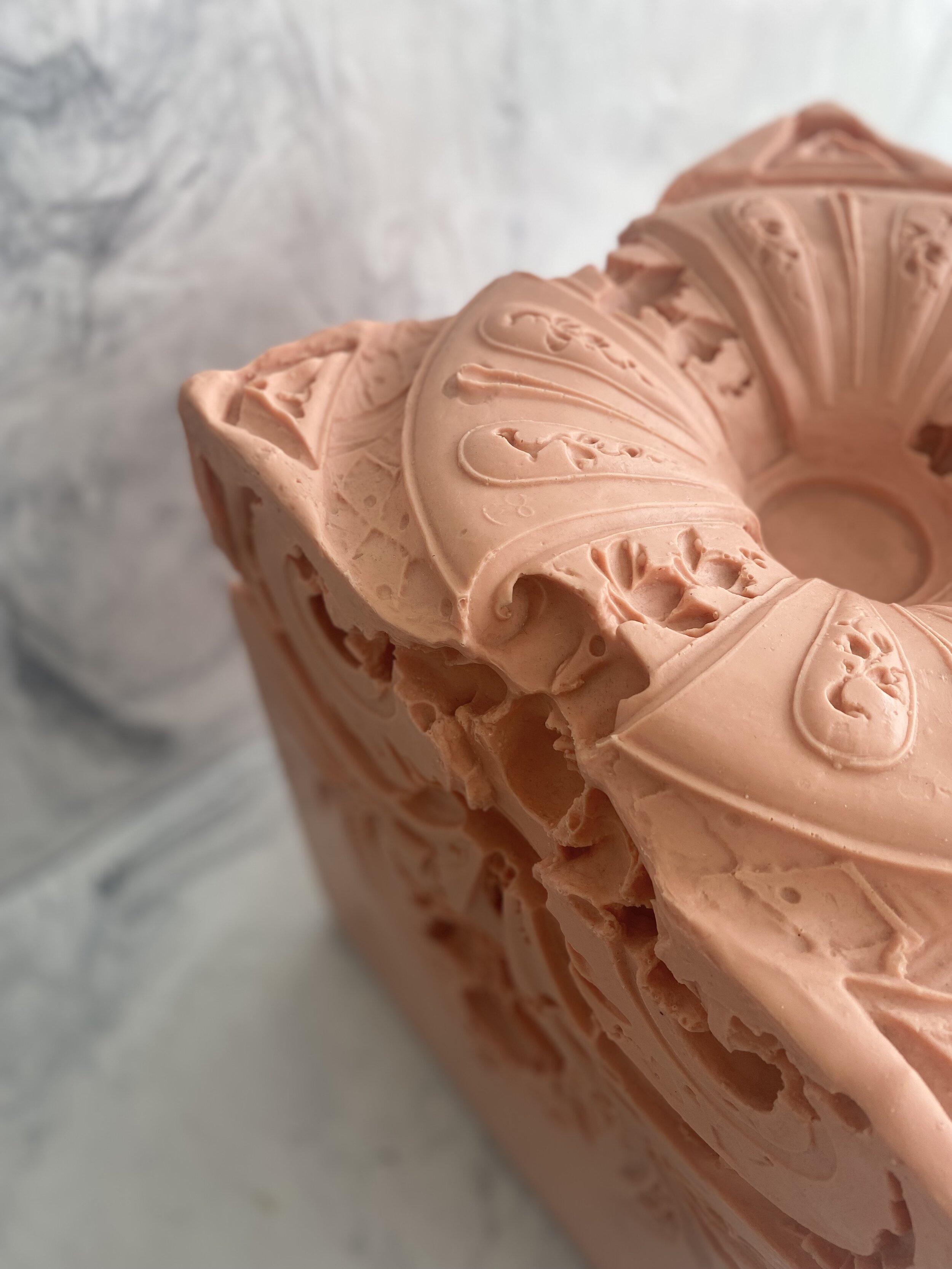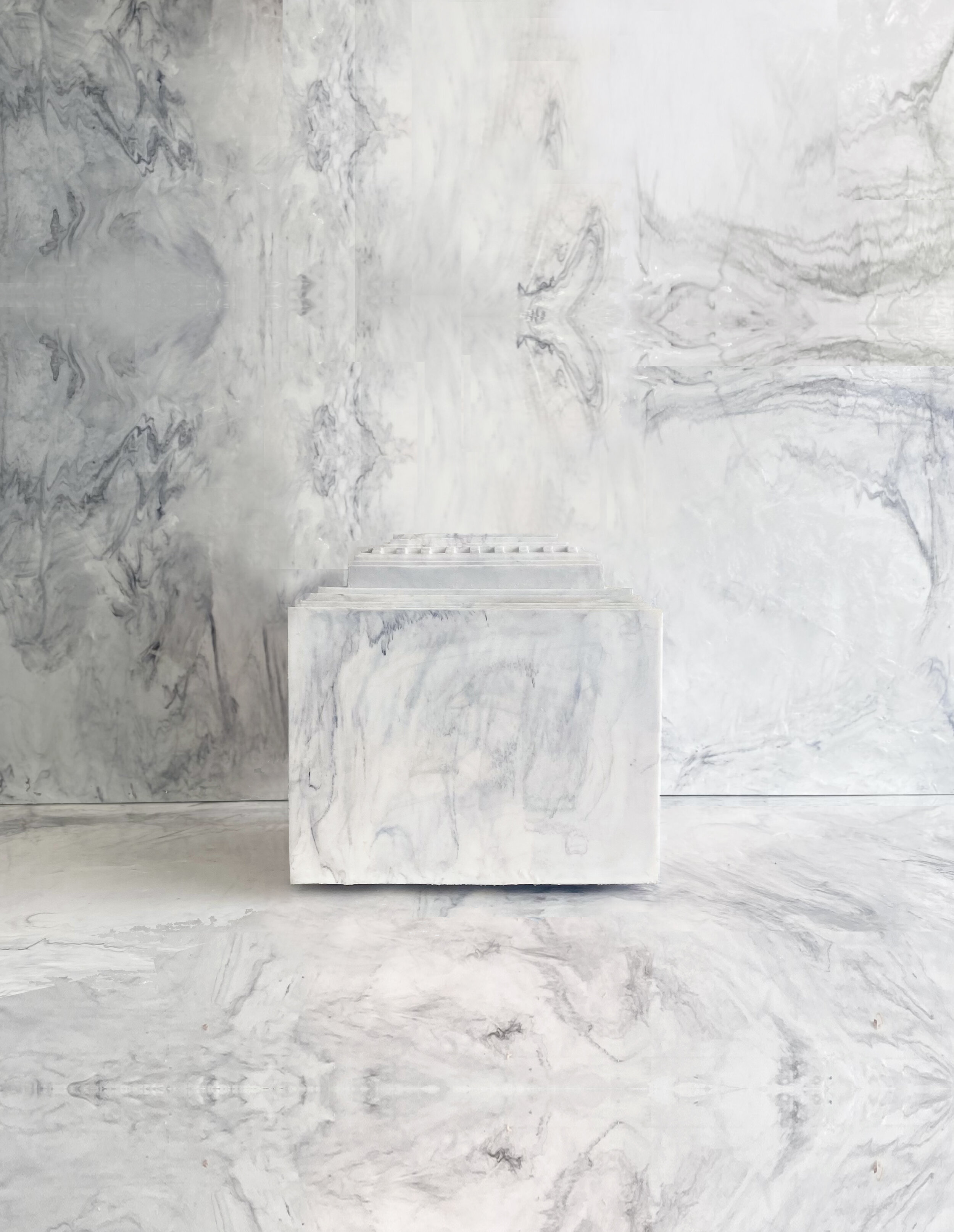elements of time in Marble look
At their core, the Elements of Time are fragments of architectural memory transformed into soft, functional sculptures. They are not mere objects to sit on; they are encounters with history. Each piece captures a specific moment in time, a physical trace of a place, rendered with the details of a forgotten ceiling, an overlooked corner of a façade, or an ornamental motif hidden in the margins of architectural heritage. They invite the viewer not only to look, but to touch, to sit, and to reflect.
These Elements carry with them the weight of history, yet they are made light; cast in rubber, they become flexible and approachable, challenging traditional notions of monumentality and permanence. They ask: What if history could soften? What if the past could be re-experienced, not through nostalgia, but through direct physical connection?
With the new Marble Look edition, developed specially for Masterly Milano, the Elements of Time take on a fresh visual language. At first glance, these pieces appear to be carved from solid stone evoking the grandeur of classical sculpture, Renaissance architecture, and 19th-century academicism. But this illusion is quickly broken the moment you touch them. The surfaces, though resembling veined marble, give under pressure. What looks like weight becomes softness. What seems fixed becomes fluid. This tension between appearance and reality forms the heart of the work.
By presenting history in a new skin, these marble-look Elements continue their mission: to give a new identity to the world that surrounds us. They are artifacts of elsewhere and elsewhen, reinterpreted for here and now. A Baroque ceiling becomes a seat; a Neoclassical cassette becomes a tactile sculpture. Through this act of transformation, the past is not preserved as a static relic but activated as something living and present: ready to be reimagined, reinterpreted, and re-experienced.
Over the past few years, Elements of Time have travelled the world, captivating audiences from Tokyo to New York, Istanbul to Singapore. These sculptural works, which fuse art, design, and architecture, have become part of the permanent collections of leading galleries and museums worldwide. Their tactile presence and poetic conceptual basis continue to resonate across continents, cultures, and contexts.
ArtNouveau
The distinguishing ornamental characteristic of Art Nouveau is its undulating asymmetrical line, often taking the form of flower stalks and buds, vine tendrils, insect wings, and other delicate and sinuous natural objects; the line may be elegant and graceful or infused with a powerfully rhythmic and whiplike force. This piece shows four dragonflies from a ceiling near the canals of Amsterdam.
Art Nouveau
Light marble look
H 46 x W 43 x D 43 cm
Edition 20 +2 AP pieces
Baroque
The style that predominated in the visual arts and architecture between 1600-1750 is usually referred to as baroque. The word baroque comes from the Portuguese barrocco, which means irregularly shaped pearl. Ornaments in this style are characterized by pronounced and heavy profiles. The Baroque was widely used at the French court and Louis XIV made grateful use of it. The highlight of this is the Palace of Versailles. The Baroque was mainly used here to impress the public and to make them feel insignificant when entering a castle or palace.
Baroque
Black marble stone look
H 44 x W 38 x D 38 cm
Edition 20 +2 AP pieces
UM1800
The ornament; a pelican, comes from a national monument in The Hague. The style is that of the Um 1800 Bewegung (UM1800 movement). The facade is decorated with sculpture by Jan Altorf. The Um 1800-Bewegung represents a conservative architectural style that was a reaction to rationalism in the architecture, of which Hendrik Petrus Berlage, for example, was a representative.
Am 1800
Marble sea blue look
H 42 x W 41 x D 41 cm
Edition 20+2 AP pieces
Neoclassism
The word classicism or neoclassicism is used for 18th and 19th century art inspired by classical culture. People had had enough of the bombastic drama of the Baroque and the exuberant decoration of the Rococo. These styles were now considered decadent, and too much part of the church and aristocracy that they were increasingly critical of. In response they returned to strict, clear and pure forms. Unlike the Renaissance, classicism followed the classics not only in spirit, but also in letter. Classicism did not like the freedom with which the Renaissance, the Baroque and the Rococo had given new forms to Greek and Roman art.
Neoclassism
Light marble look
H 47 x W 47 x D 47 cm
Edition 20+2 AP pieces
